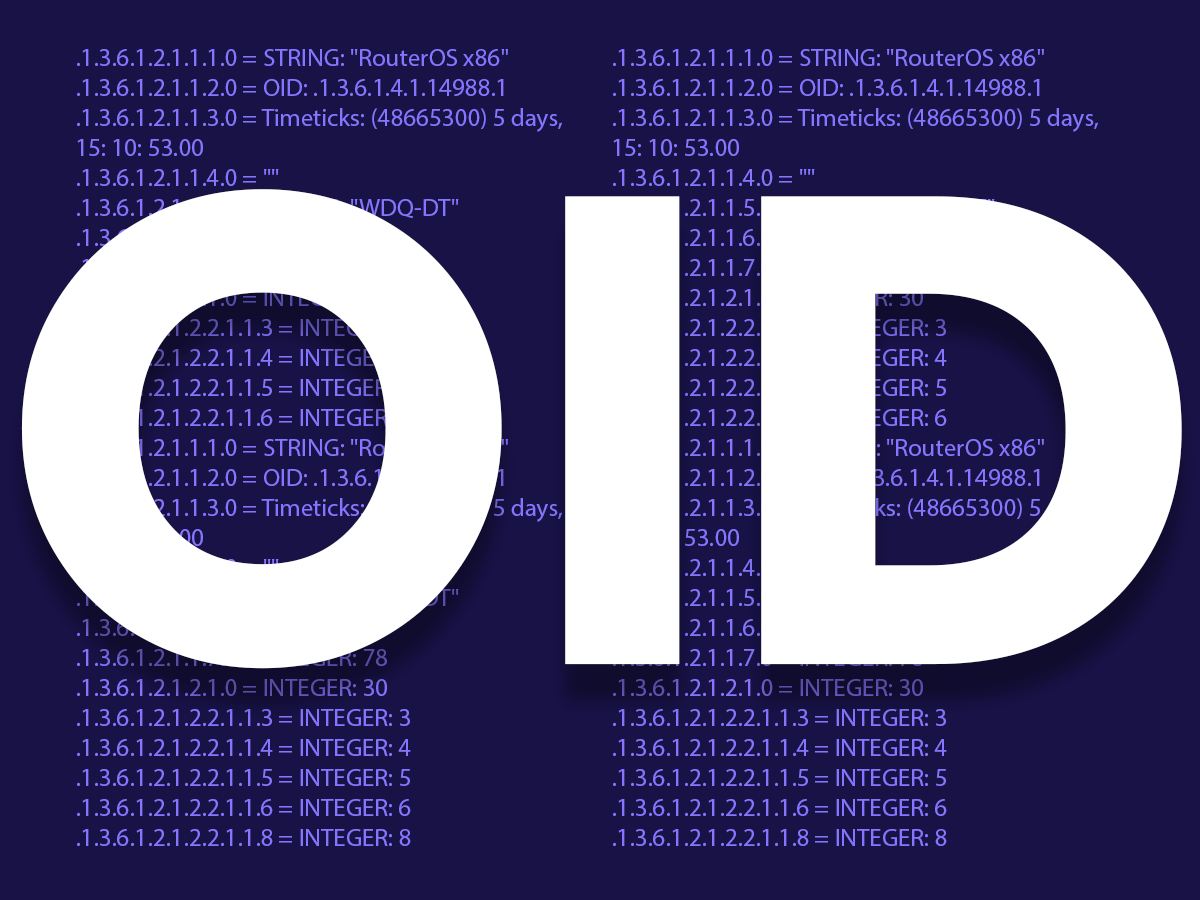What is an Object Identifier (OID)?
We take a deeper look into OIDs, and their important role in network management.

A Simple Reference for Network Engineers
An object identifier or OID is a unique number string that serves as a digital fingerprint for each object within the network infrastructure.
OIDs allow Network Management Systems (NMS) to recognize and monitor the performance and health of various network elements accurately. Familiarity with how OIDs work makes them an invaluable part of the network engineering toolkit.
Let’s look at what they are used for, their relationship with SNMP (Simple Network Management Protocol) and MIBs (Management Information Bases), and how understanding them can be useful.
Looking for the free SNMP Walk OID Decoder?
Understanding Object Identifiers (OID)
Imagine a library filled with books but instead of titles every book has a unique number. Finding a specific book without knowing its number would be impossible. A network is like that library and can contain a huge number of objects of many types. OIDs are like that unique number, but for identifying various objects within a network, such as devices, protocols, or software components.
OIDs are how each component is uniquely tagged and identified for clarity and organization within networks.
OIDs follow a hierarchical naming convention. This hierarchy starts with a root level, followed by subsequent levels that represent organizations, standards, and specific objects. Each level in the hierarchy is separated by periods and consists of numbers that signify the path from the root to the specific object.
This structured approach ensures that OIDs are discrete. No two can be identical. It’s a one-to-one relationship between an object and its identifier (OID). In other words, OIDs allow for the precise querying and monitoring of specific attributes of network devices.
OIDs may represent anything from temperature, to connections, to throughput for a device on a network. Some OIDs are static, others are dynamic objects that represent changes in how a device is operating on the network.
OIDs, SNMP, and MIBs
This triad of OIDs, SNMP, and MIBs forms the core of efficient network management.
SNMP is the standard protocol for monitoring and managing network devices and querying OIDs. It operates by exchanging management information between network devices and management systems. It’s the method for communicating the information.
A MIB is a collection or database of information. It contains definitions of the properties of the network device, including status, performance, and configuration information, with each specific property or object uniquely identified by an OID.
Each OID points to a unique property defined in the MIB, ensuring that SNMP requests are accurately directed.
OIDs ensure accurate targeting within SNMP operations, leveraging the structured organization of MIBs to navigate and manage vast amounts of network data effectively. The standardized format of OIDs promotes interoperability across different network devices and management systems, crucial for the management of complex, multi-vendor networks.
This structure and hierarchy enhances the management, efficiency, and reliability of networks.
Network Monitoring and Decoding OIDs
Network engineers are responsible for network performance.
With so many potential points of failure, it’s common for network engineers to deploy Network Management Systems (NMS) to constantly track and monitor the network for problems.
Network engineers can build network monitoring around specific OIDs as new devices are deployed on the network. They’ll often look for the most relevant OIDs and build monitoring for those into their NMS.
Most of the OIDs on a device get ignored because it is so cumbersome to try to monitor them all. So engineers focus on the most likely OIDs to function as indicators of network problems. Yet sometimes performance problems or points of failure occur in OIDs that are not being monitored. When that happens, network engineers become troubleshooting detectives.
They will try to identify the problematic device and perform an SNMP Walk, querying every MIB and OID on the device. The output of an SNMP Walk is a list of OIDs—strings of numbers that are difficult and time-consuming to read and decode into plain English.
This introduces an extra step of decoding the OIDs in order to find the problem. By using an SNMP Walk OID Decoder engineers can save a lot of time versus looking up individual OIDs in a list that could contain hundreds or thousands of individual OIDs.
Try this free SNMP Walk OID Decoder
In summary, OIDs are not just strings of numbers; they are indispensable tools in the network engineering toolkit. Their unique identification capability, coupled with their integration into network management protocols and systems, underscores their importance in maintaining the health and efficiency of network systems.